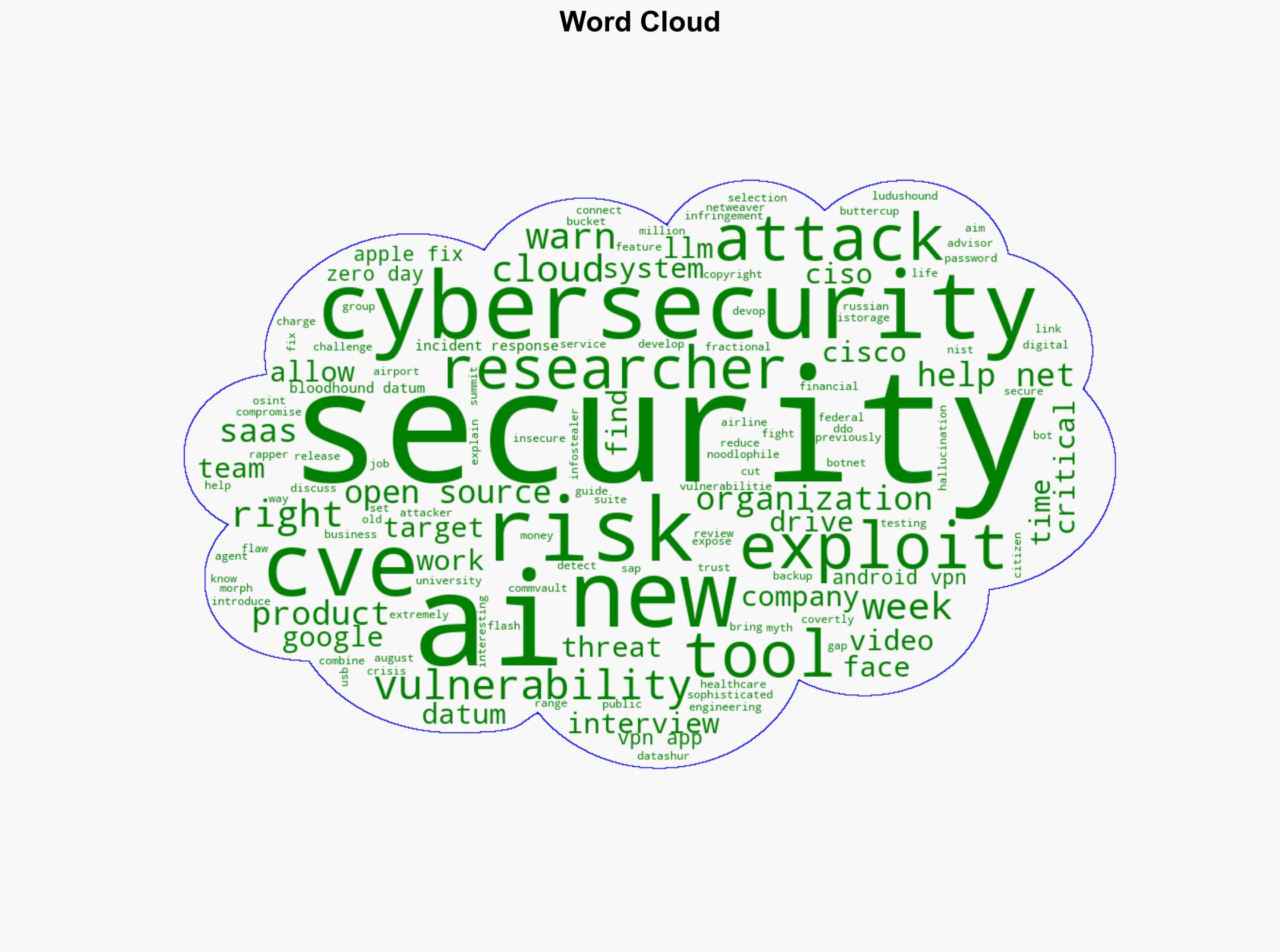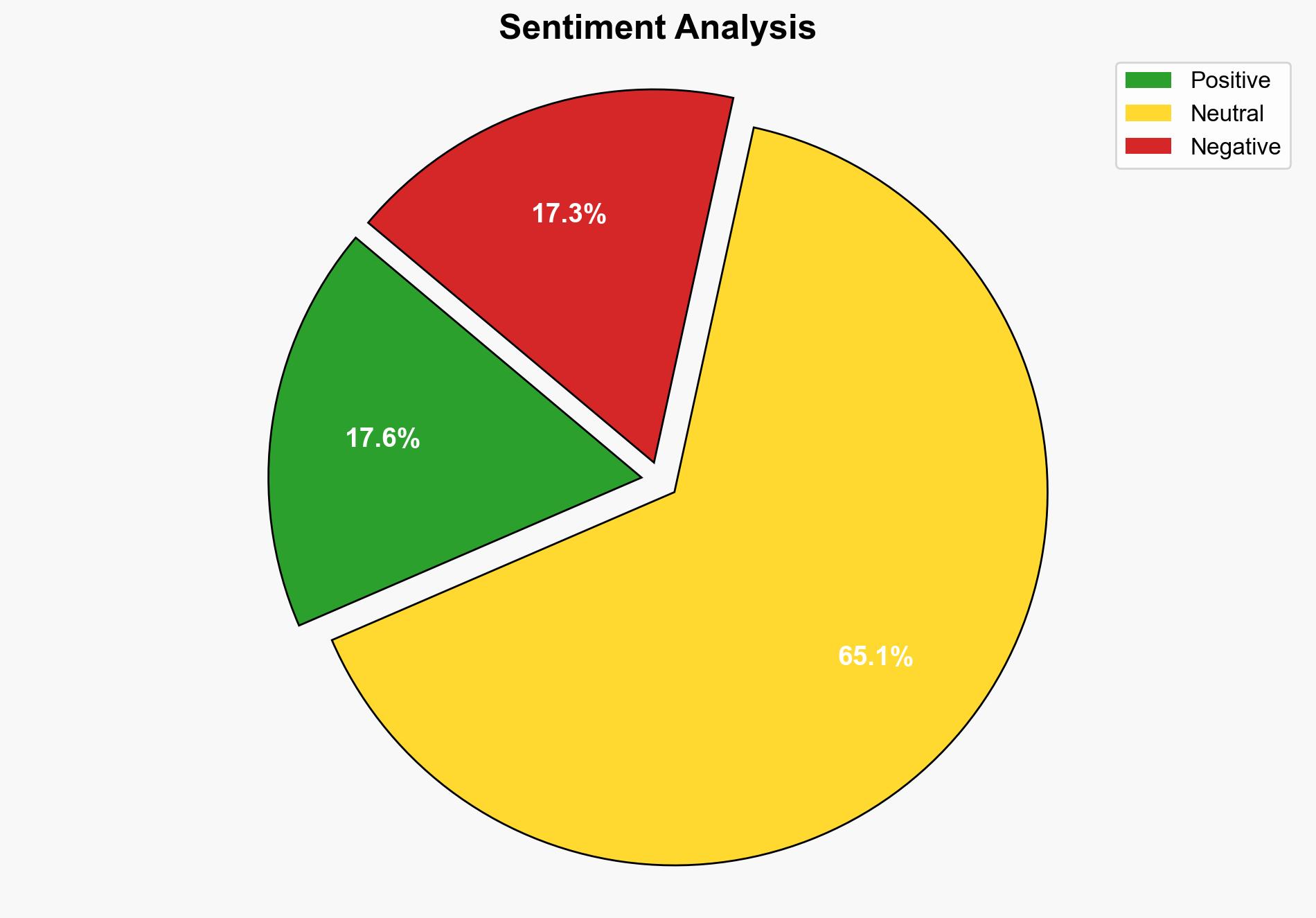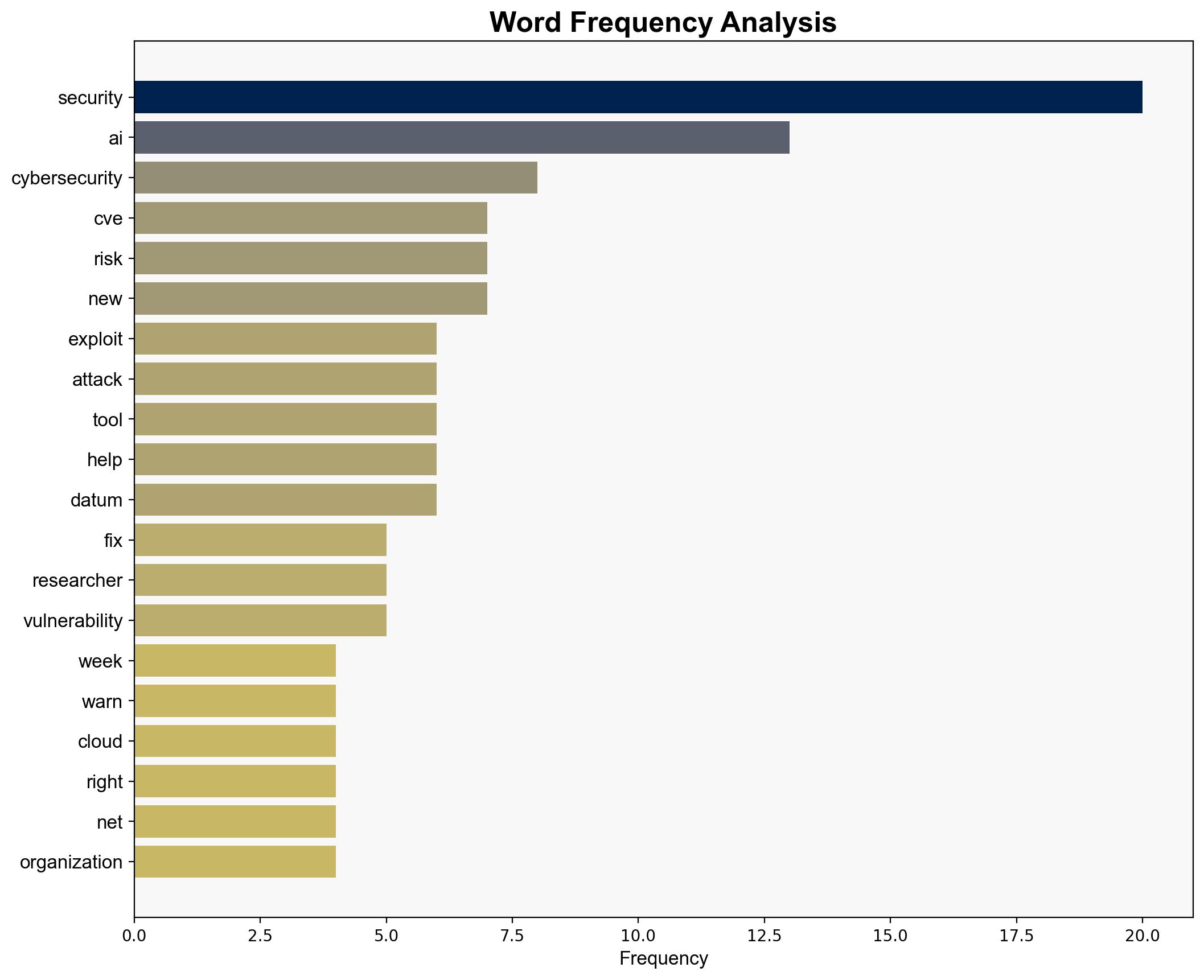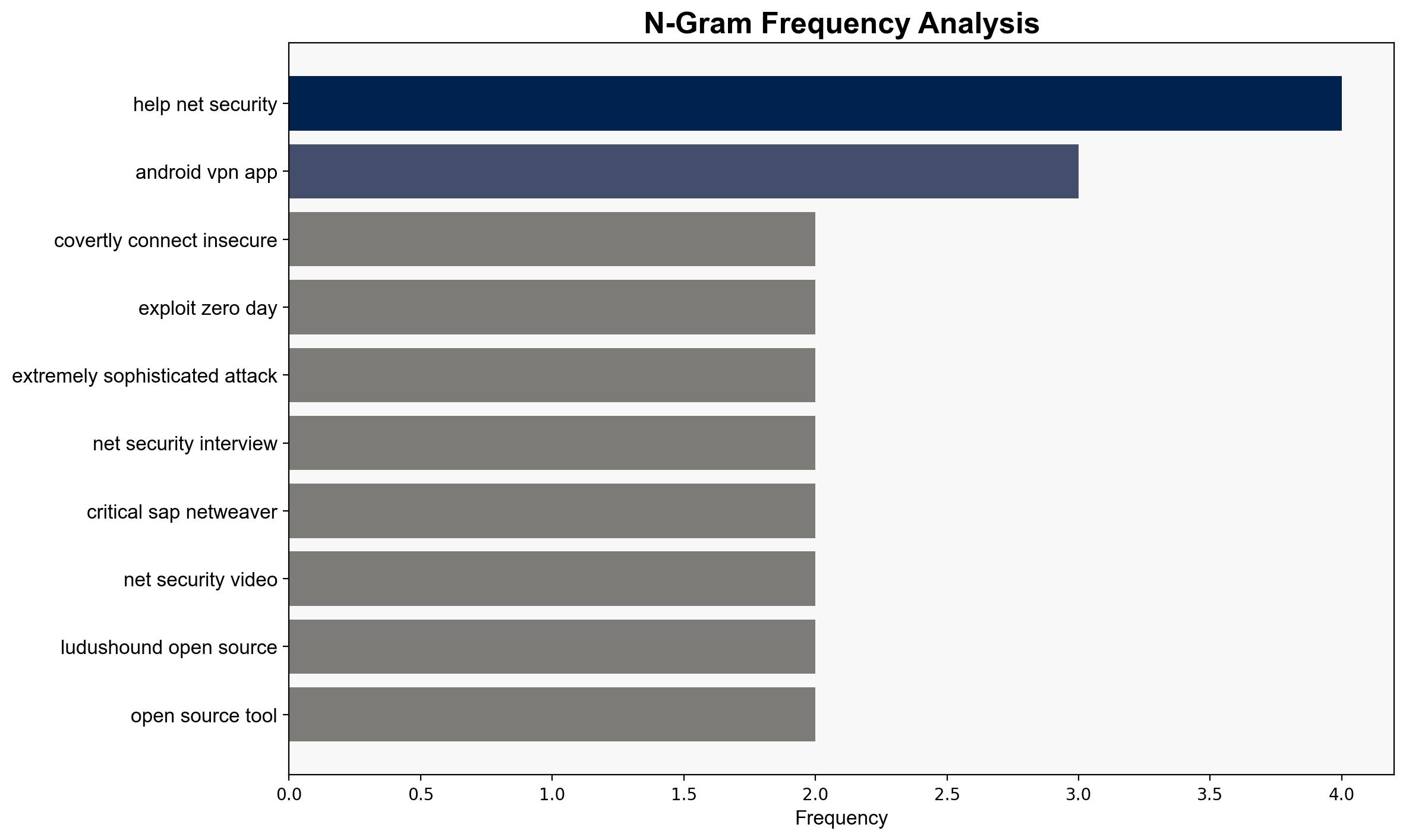Week in review Covertly connected and insecure Android VPN apps Apple fixes exploited zero-day – Help Net Security
Published on: 2025-08-24
Intelligence Report: Week in review Covertly connected and insecure Android VPN apps Apple fixes exploited zero-day – Help Net Security
1. BLUF (Bottom Line Up Front)
The most supported hypothesis is that the vulnerabilities in Android VPN apps and Apple’s zero-day exploit reflect a broader trend of increasing sophistication in cyber threats, necessitating enhanced cybersecurity measures. Confidence level: Moderate. Recommended action: Prioritize the development and deployment of advanced threat detection and response systems, particularly those leveraging AI and machine learning, to mitigate these evolving threats.
2. Competing Hypotheses
Hypothesis 1: The vulnerabilities in Android VPN apps and Apple’s zero-day exploit are isolated incidents, primarily due to oversight in software development and patch management processes.
Hypothesis 2: These incidents are indicative of a coordinated effort by sophisticated threat actors to exploit systemic vulnerabilities in widely used technologies, aiming to compromise critical infrastructure and personal data.
Using the Analysis of Competing Hypotheses (ACH) 2.0, Hypothesis 2 is better supported due to the involvement of advanced threat actors like those linked to the Russian FSB and the sophisticated nature of the zero-day exploit targeting Apple devices.
3. Key Assumptions and Red Flags
Assumptions:
– Hypothesis 1 assumes that software vulnerabilities are primarily due to internal errors rather than external threats.
– Hypothesis 2 assumes a high level of coordination among threat actors targeting multiple platforms.
Red Flags:
– Lack of detailed attribution for the Android VPN vulnerabilities.
– Potential bias in overestimating the coordination level among threat actors without concrete evidence.
4. Implications and Strategic Risks
The increasing sophistication of cyber threats poses significant risks to national security and economic stability. The potential for cascading effects is high, as compromised devices can serve as entry points for broader attacks on critical infrastructure. Geopolitically, these incidents could escalate tensions, particularly if state-sponsored actors are involved.
5. Recommendations and Outlook
- Enhance collaboration between government and private sectors to share threat intelligence and improve incident response capabilities.
- Invest in AI-driven cybersecurity solutions to detect and respond to threats in real-time.
- Scenario Projections:
- Best Case: Rapid deployment of security patches and improved threat detection systems mitigate risks.
- Worst Case: Continued exploitation of vulnerabilities leads to significant breaches in critical infrastructure.
- Most Likely: Incremental improvements in cybersecurity posture reduce but do not eliminate risks.
6. Key Individuals and Entities
– Researchers from Arizona State University and Citizen Lab
– Russian Federal Security Service (FSB)
– Jacob Ideskog, CTO of Curity
– Nikoloz Kokhreidze, associated with Mando
7. Thematic Tags
national security threats, cybersecurity, counter-terrorism, regional focus





